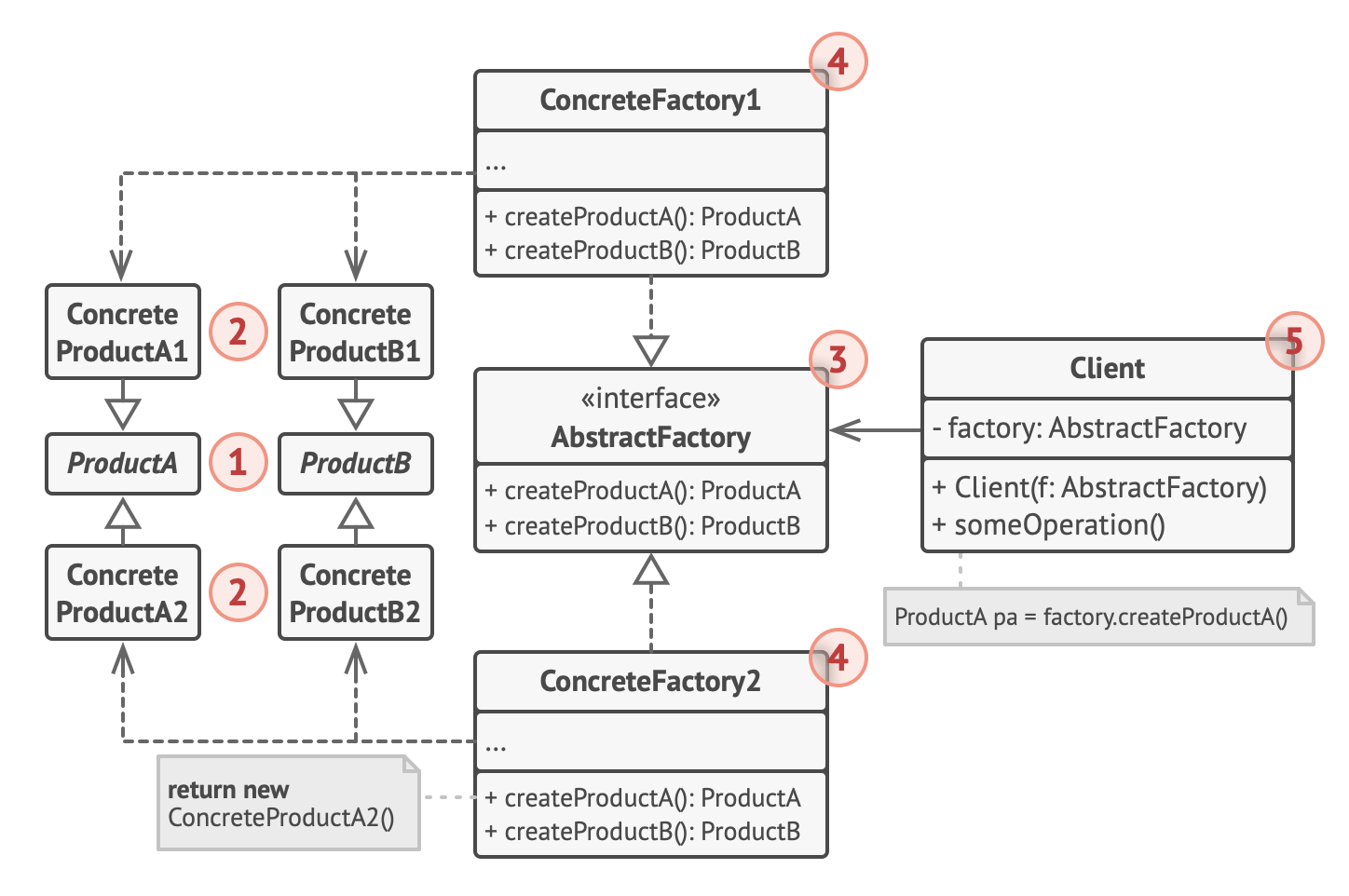Abstract Factory
- it is an extension of the factory design pattern
- it is needed when making an implementation or a factory that is more dynamic
- which is to be able to add more features easily to the factory without needing to modify the factory again
- better to create a factory first before modifying it into an abstract factory
Allows you to create families of related objects without specifying a concrete class for each object
Analogy:
- Imagine that you're a clothing designer
- You need to build types of clothing
- e.g.: shirts, sweaters, jeans
- You also need sizes of clothing
- e.g.: petites, regular, tall
- To build these with Abstract Factory pattern
- create an interface to build the clothing type (e.g.: sweater)
- create another interface to build the size (e.g.: petites)
- These 2 interfaces will work together to generate a (petite-sized sweater)
Coding terms:
- Imagine you're creating a "submit" button that will be used on windows and mac operating systems
- The button is the same object with the same functionality
- only with a different class (Windows or Mac) depending on the operating system
Structure

Abstract Products declare interfaces for a set of distinct but related products which make up a product family
Concrete Products are various implementations of abstract products, grouped by variants. Each abstract product (chair/sofa) must be implemented in all given variants (Victorian/Modern)
The Abstract Factory interface declares a set of methods for creating each of the abstract products
Concrete Factories implement creation methods of the abstract factory
- Each concrete factory corresponds to a specific variant of products and creates only those product variants
Although concrete factories instantiate concrete products, signatures of their creation methods must return corresponding abstract products
- This way the client code that uses a factory doesn’t get coupled to the specific variant of the product it gets from a factory
- The Client can work with any concrete factory/product variant, as long as it communicates with their objects via abstract interfaces
Summary
- makes the factory process easier by offering a generic interface to build a family of related objects
When to apply
- We should get benefits from usage of the Abstract Factory while working with various families of related products
- In this case we are removing the dependency on concrete classes of these products and allowing future extensibility
- The abstract factory encapsulates the details of object creation
- But client code can still work with all types of created objects, since their interface is initially defined
Pros and Cons
| pros | cons |
|---|---|
| ensures compatibility of products | code becomes more complicated after introducing lots of new interfaces |
| gets rid of coupling | after extending abstract factory interface all concrete factories will need to be updated to implement it |
| extracts the product creation code into one place. (Single responsibility) | |
| introducing new variants without breaking existing code. (Open/Closed) |